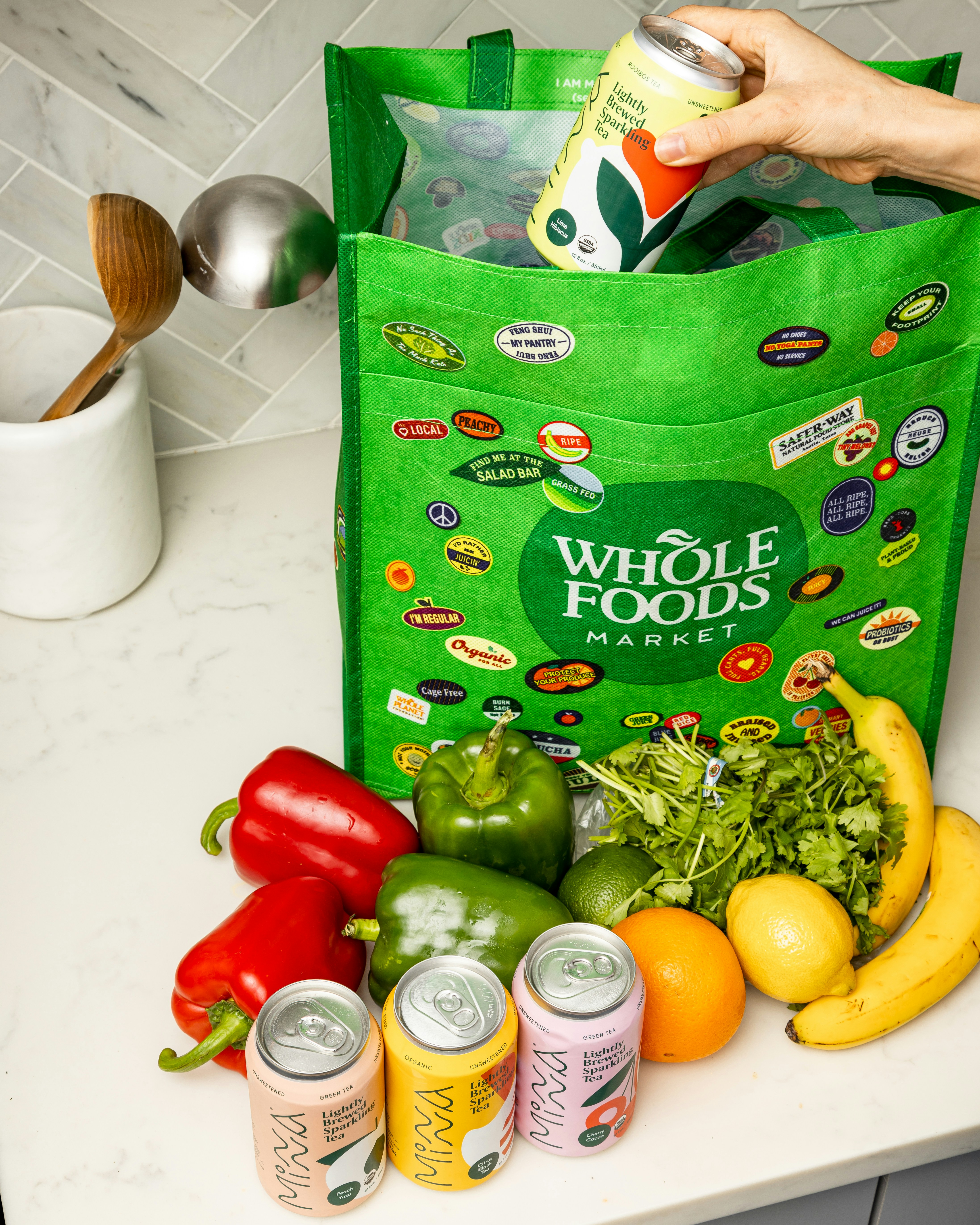- 1. Prioritize Organic Fruits and Vegetables
- 2. Choose Organic Snacks and Treats
- 3. Incorporate Organic Dairy Products
- 4. Use Organic Grains and Legumes
- 5. Opt for Organic Meat and Poultry
- 6. Read Labels Carefully to Avoid Pesticides
- 7. Introduce Organic Juices and Hydration Options
- 8. Grow Organic Foods at Home
- 9. Educate Kids on the Benefits of Organic Food
- 10. Establish Consistent Organic Eating Habits
1. Prioritize Organic Fruits and Vegetables
The Importance of Organic Fruits and Vegetables
When it comes to young children, providing them with organic fruits and vegetables is crucial for their health and development. In 2025, more families are recognizing that organic produce contains fewer pesticide residues, which is essential for kids’ developing bodies. According to recent studies, children who consume organic produce have lower levels of pesticide metabolites in their urine, signaling reduced toxin exposure.
Opting for organic fruits and vegetables also ensures that your kids benefit from higher nutrient levels. Organic farming practices tend to preserve the soil’s health, leading to more nutrient-dense produce. Think of vibrant berries, crisp apples, or fresh carrotsâthese are not only delicious but also packed with antioxidants and vitamins vital for a growing child’s immune system.
Establishing a routine of serving organic fruits and vegetables can build lifelong healthy eating habits. Start by introducing diverse options and including cherry tomatoes, spinach, and bananas into their meals. Remember, consistency is key in fostering a preference for organic produce among children.
Practical Tips for Buying Organic Produce
Shop at local farmers’ markets or join Community Supported Agriculture (CSA) programs to access fresh, organic produce. These avenues often provide better prices and fresher options compared to conventional supermarkets. When shopping in stores, look for the USDA Organic label to ensure certification and authenticity.
If budget constraints are a concern, focus on the “Dirty Dozen” list from the Environmental Working Group, which highlights produce with higher pesticide residues. Prioritize buying these organic to maximize health benefits. Items like strawberries, spinach, and apples are excellent candidates for organic purchases.
Incorporating organic produce into your familyâs diet requires planning. Prepare snacks like organic veggie sticks or smoothie ingredients ahead of time, making it easier for kids to choose healthy options throughout the day.
2. Choose Organic Snacks and Treats
Why Organic Snacks Matter
Many popular snacks for kids are loaded with artificial flavors, preservatives, and pesticides. Switching to organic snacks not only reduces chemical intake but also introduces your children to cleaner, more wholesome options. In 2025, the demand for organic snack brands is rising as parents seek healthier alternatives for their kids’ school lunches and after-school treats.
Organic snack options, such as organic crackers, granola bars, or dried fruit, are often made with natural ingredients, free from synthetic additives. These snacks tend to be lower in added sugars and artificial colors, promoting better dental health and balanced energy levels for kids.
Encourage your children to develop a palate for organic treats by involving them in choosing and preparing snacks. Itâs a fun way to educate kids about healthy eating habits and teach them to enjoy food that nourishes their bodies.
Smart Snacking Strategies for Parents
Carry ready-to-eat organic snacks in your bag to prevent children from reaching for less healthy convenience foods. Keep a stash of organic fruit leathers or nut butters to make quick, wholesome snacks. Reading labels carefully will help you avoid products with hidden artificial ingredients.
At home, batch-prepare organic trail mixes or energy balls that kids can grab on the go. This not only simplifies snack time but also ensures your kids are consuming organic, nutrient-dense foods.
By making organic snacks accessible and fun, you’ll foster an early appreciation for healthy eating that can last a lifetime.
3. Incorporate Organic Dairy Products
The Benefits of Organic Dairy for Kids
Organic dairy products such as milk, yogurt, and cheese are excellent sources of calcium, vitamin D, and protein essential for healthy bones and muscle development. In 2025, families increasingly opt for organic dairy to avoid hormones and antibiotics often found in conventional dairy.
Organic dairy products are produced from cows that are not given synthetic growth hormones like rBGH. This reduces childrenâs exposure to hormones linked to certain health risks. Also, organic certification ensures better animal welfare practices, which can translate to better quality milk and dairy products.
Choosing organic dairy can significantly impact your child’s overall nutritional profile while supporting sustainable farming practices. Integrate organic milk into smoothies or serve organic yogurt with fresh fruit for balanced snacks.
Tips for Including Organic Dairy in Daily Meals
Start the day with organic yogurt parfaits layered with fresh organic berries and granola. For lunch, consider organic cheese in sandwiches or as part of a veggie platter. Transitioning to organic dairy can be seamless with familiar favorites.
Substitute conventional milk with organic options in all recipes, including baking. Also, read labels to ensure the dairy is truly organic, with no artificial additives or flavorings.
Encouraging children to drink organic dairy not only supports their physical growth but also instills healthy eating habits early on.
4. Use Organic Grains and Legumes
Why Choose Organic Grains and Legumes
Whole grains like organic oats, brown rice, and quinoa are fantastic fuel for active kids. Legumes such as lentils and chickpeas provide plant-based protein and fiber, supporting digestion and sustained energy. In 2025, the shift towards organic grains and legumes is driven by increased consumer awareness of pesticide residues and environmental impact.
Organic grains are grown without synthetic fertilizers or pesticides, leading to less chemical residue and better soil health. Incorporating these into meals ensures your children get vital nutrients without harmful additives.
Start by swapping conventional bread and pasta with organic options. Use organic oats for breakfast or baking to make your child’s meals more wholesome and nourishing.
Meal Ideas and Tips
Make hearty salads with organic chickpeas or create nutritious bowls with organic brown rice and vegetables. These ingredients also form the basis for healthy wraps and mini-meals that children love.
Meal prepping with organic grains and legumes encourages regular consumption and helps develop good dietary patterns. Experimenting with different recipes can make healthy eating fun and tasty for kids.
Learning to cook with organic grains and legumes equips children with lifelong skills and knowledge about healthy food choices.
5. Opt for Organic Meat and Poultry
Health and Ethical Advantages
Choosing organic meat and poultry for your children means fewer artificial growth hormones, antibiotics, and pesticides. According to 2025 data, organic meats contain lower levels of antibiotic-resistant bacteria, which is vital for your child’s health and broader public health concerns.
Organic practices also prioritize animal welfare, ensuring animals are raised in humane conditions without prophylactic antibiotics or unnecessary medications. This ethical approach aligns with many parents’ values concerning sustainability and animal rights.
Incorporate organic chicken, beef, or turkey into family meals like stir-fries, roasts, or stews. These options provide essential nutrients and support better long-term health outcomes for children.
Shopping Tips and Cooking Ideas
Buy from trusted organic butchers or farmers to ensure authenticity. Always verify certification labels before purchasing meat and poultry. When cooking, use simple herbs and spices to highlight natural flavors.
Meal planning with organic meat can reduce processed food intake and encourage balanced, nutritious meals for your kids.
Preparing organic meat at home allows control over ingredients, making it easier to provide healthy options consistently.
6. Read Labels Carefully to Avoid Pesticides
The Significance of Reading Labels
In 2025, awareness around food labeling is higher than ever. Reading labels diligently helps you avoid foods with hidden pesticides and artificial additives. Look for certifications like USDA Organic, Non-GMO Project Verified, or Ecolabels to ensure product integrity.
Huge Discount on the Best Certified Organic Nutrient Dense Supplement!
Many processed foods, even those marketed as healthy, can contain pesticide residues or artificial ingredients. Educating yourself on reading ingredient lists and choosing minimally processed, organic options is essential for the health of your kids.
Develop the habit of scrutinizing labels at the store, and consider using mobile apps that scan barcodes to check for organic status and ingredient transparency.
Practical Tips to Simplify Label Reading
Create a checklist for shopping trips, focusing on key organic indicators. Keep a list of trusted brands and brands to avoid.
Plan weekly meal ideas centered around organic produce and label-conscious purchases. This approach makes healthy choices easier and more consistent.
Remind children about why choosing organic foods mattersâempowering them to make informed decisions as they grow.
7. Introduce Organic Juices and Hydration Options
The Role of Organic Drinks in Children’s Health
Hydration is vital for growing children, and opting for organic juices and beverages ensures they avoid artificial colors, flavors, and preservatives. In 2025, organic hydration options are trending with parents who prioritize chemical-free drinks for their kids.
Organic fruit juices, diluted as needed, offer a natural source of vitamins and antioxidants. Additionally, water infused with organic herbs or fruits is a fun way to encourage hydration without added sugars.
Remember, while organic juices can be healthy, they should be consumed in moderation due to natural sugar content. Always choose options with no added sugars or artificial sweeteners.
Tips for Making Hydration Fun and Healthy
Prepare homemade organic flavored water by infusing with strawberries, mint, or cucumber for a refreshing twist. Keep a water bottle with your child’s favorite organic branding to encourage regular sipping throughout the day.
Avoid sugary drinks by setting a good example yourself, choosing organic, low-sugar options. Incorporate organic herbal teas suitable for children for variety.
Making hydration a fun part of your child’s daily routine helps establish lifelong healthy drinking habits.
8. Grow Organic Foods at Home
Benefits of Home Organic Gardening
Engaging children in growing their own organic vegetables and herbs fosters a strong understanding of food origins and sustainability. In 2025, home gardening’s popularity continues to rise, offering a fun, educational, and healthy activity.
Growing organic food at home means control over the entire process – from seed to plate. It reduces pesticide exposure and encourages kids to try new vegetables they’ve planted themselves, like cherry tomatoes or lettuce.
Plus, gardening teaches patience, responsibility, and respect for nature, making it a valuable life skill.
Starting Your Organic Garden
Begin with easy-to-grow organic seedlings or seeds suitable for your climate. Use organic compost and avoid chemical pesticides and fertilizers. Make the process interactive by planning a small garden plot or container garden suitable for kids’ ages.
Involve children in watering, harvesting, and tasting their freshly grown produce. This hands-on approach can inspire them to enjoy a variety of organic foods and appreciate healthy eating.
Document the growth process and celebrate harvest days to create positive associations with organic foods.
9. Educate Kids on the Benefits of Organic Food
Building Awareness from an Early Age
Teaching children about the benefits of organic food for kids empowers them to make informed choices. Use age-appropriate stories, games, and discussions to highlight how organic foods support health, the environment, and animal welfare. In 2025, educational programs around organic eating are gaining popularity in schools and communities.
Sharing simple facts, like how organic fruits grow without risky pesticides or how animals are treated kindly on organic farms, can foster empathy and responsibility. Making organic eating fun and relatable encourages children to buy into healthier habits.
Encourage kids to ask questions and involve them in grocery shopping and meal prep, turning learning into an engaging activity.
Practical Tips for Parents and Educators
Create colorful posters or storyboards illustrating the journey of organic food from farm to table. Organize fun activities or school projects focused on organic gardening and nutrition. Reinforcing these messages consistently helps solidify understanding.
Reward healthy choices with praise, stickers, or fun organic snacks. Early education on organic food for kids sets the foundation for lifelong healthy habits.
10. Establish Consistent Organic Eating Habits
Long-term Strategies for Healthy Organic Diets
Consistency is key when it comes to organic food for kids. Establishing regular meal routines centered around organic foods helps reinforce healthy habits. In 2025, families that develop a sustainable approach to organic eating see lasting benefits in children’s health and well-being.
Plan weekly menus, involve children in meal prep, and create shopping lists focused on organic options. Consistent habits introduce children to a wide variety of nutritious foods, reducing reliance on processed or artificial products.
Foster a positive attitude toward healthy eating by making it enjoyable and part of your family values. Over time, these habits will become second nature for your kids.
Tips for Staying on Track
Keep a grocery list that emphasizes organic produce, dairy, and grains. Use meal planners and cookbooks dedicated to organic recipes. Regularly educating yourself and your family about the benefits sustains motivation.
Be patient and flexible, recognizing that developing new habits takes time. Celebrate small victories as your children embrace a more organic diet.
Remember, every small step toward organic eating contributes to a healthier future for your kids.
Conclusion: Embracing Organic Food for Kids in 2025
In 2025, prioritizing organic food for kids is more accessible and important than ever. From choosing organic fruits and vegetables to cultivating an understanding of healthy habits, these top 10 tips aim to guide parents and caregivers toward a healthier, more sustainable future for children. Implementing these strategies today sets the foundation for a lifetime of wholesome eating and well-being.
Remember, making small, consistent changes can have a transformative impact on your child’s health. Embrace organic food for kids as a core part of your family’s lifestyle, and enjoy watching your children thrive in a healthier, greener world.
Frequently Asked Questions
- 1. Why is organic food for kids better than conventional options?
- Organic food for kids contains
Huge Discount on the Best Certified Organic Nutrient Dense Supplement!
Related Content
- 10 Effective Organic Live Enzymes Tips for 2025 Your Health
- The Ultimate Guide to the Best Organic Nutrition Program Strategies for 2025
- Best Organic Omega-3 Supplement in Barr South Carolina
- Understanding the Importance of Organic Whole Foods
- 10 Effective certified organic supplements to Boost Your Health in 2025





